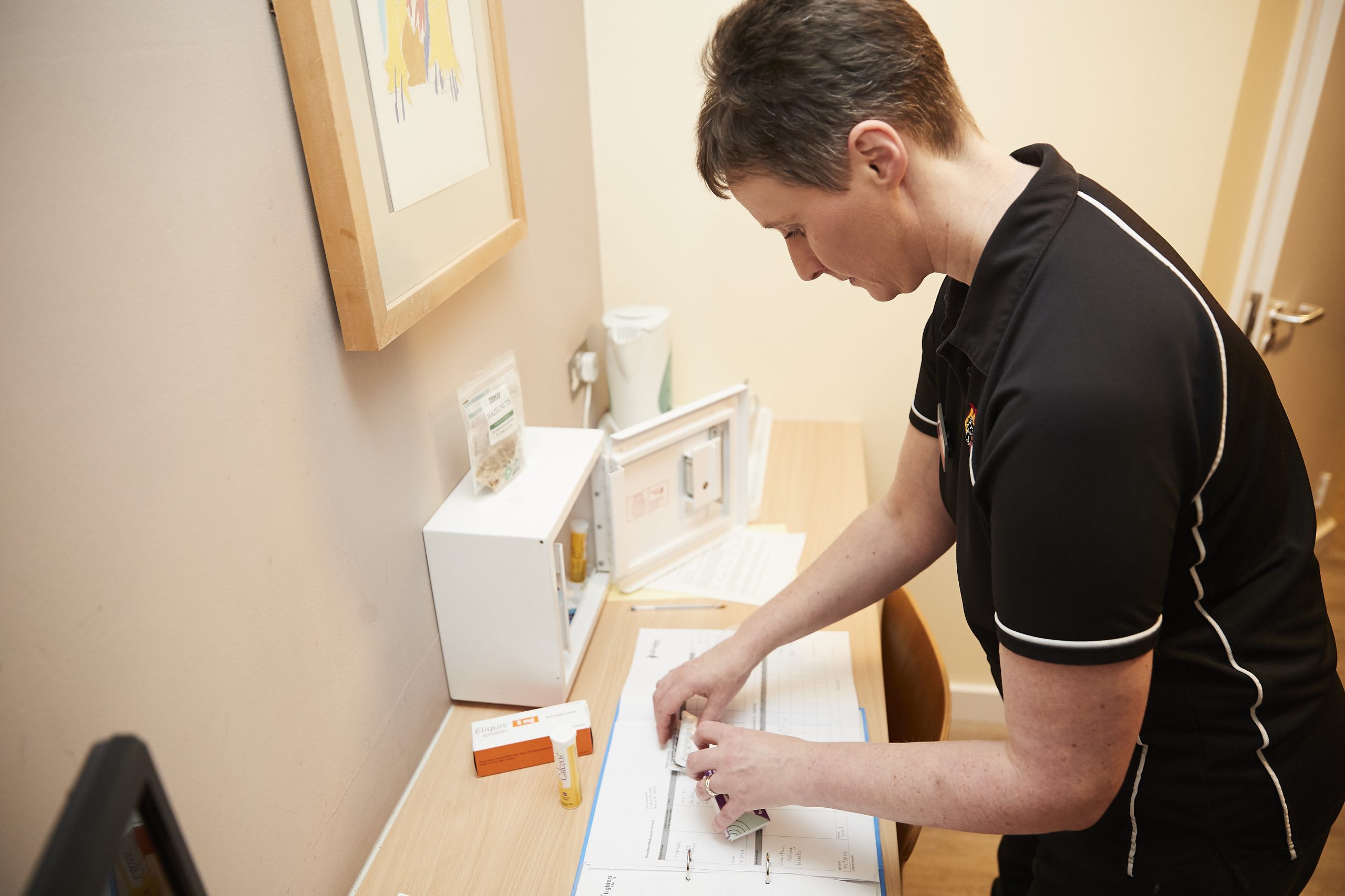Over 2,400 men are diagnosed with testicular cancer in the UK every year. Of those, around 47% will be under the age of 35.
However, it is one of the most treatable forms of cancer – with the outlook one of the best – so spotting it early is incredibly important.
Now, our Nursing Services Lead Kath Savage reveals some of the main symptoms, exactly how to check yourself and what to do if you’re concerned:
What is testicular cancer?
Cancer of the testicle is one of the less common cancers and tends to mostly affect men between 15 and 49 years of age.
In England and Wales, almost all men (99%) survive for a year or more after being diagnosed with testicular cancer, and 98% survive for five years or more after diagnosis.
If found early, there is nearly a 100% chance of a cure – so knowing the signs and how to check yourself is essential.
What are the symptoms?
Typical symptoms are a painless swelling or a lump in one of the testicles, or any change in shape or texture of the testicles. Other symptoms can also include:
- An increase in the firmness of a testicle
- A difference in appearance between one testicle and the other
- A dull ache or sharp pain in your testicles or scrotum, which may come and go
- A feeling of heaviness in your scrotum
It is important to be aware of what feels normal for you. Get to know your body and see a GP if you notice any changes.
What are the risk factors?
Unlike many cancers, there are few known strong risk factors for testicular cancer and we cannot currently predict who is likely to get the disease.
Whilst most of these cancers occur in unsuspecting individuals, some risk factors can be traced in a minority of cases. These can include:
- Undescended testicle (cryptorchidism): Where the testicle fails to descend into the scrotum. Around 10% of men diagnosed with testicular cancer will have a history of this.
- Pre-cancerous cells found inside the testicle: There is a 50% chance that these cells will develop into testicular cancer within five years.
- Diagnosed before: If you have been diagnosed with it before, you are 12-18 times more likely to develop in the other testicle, which is why it’s important to regularly check yourself.
- Family history: Having a close relative with a history of testicular cancer or an undescended testicle increases your risk of also developing it. For example, if your father had testicular cancer, you are around four times more likely to develop it than someone with no family history of the condition.
How to check yourself
The best place to check yourself is in a bath or the shower. Roll each testicle between the thumb and forefinger to check the surface is free of lumps. Do not squeeze.
Get to know your own body and testicles, including their size, texture and anatomy, so you notice any changes straight away.
Does pain mean cancer?
You may experience testicular pain; this does not mean it is cancer. There are several reasons why you might experience testicular pain.
- Stress
- Wearing underwear that is too tight as well as sexual arousal with an erection, but without ejaculation. Pain from this will usually go after a few hours while chronic sports damage may need further input from a GP or physiotherapist.
- Physical activity can sometimes cause strain injuries in the lower back and groin which may cause nerve pain.
What should I do?
If you find a lump or experience pain, visit your GP. Most lumps are not cancerous, but it is important to get them checked.
Your GP will ask you about your symptoms, and take a medical history, as well as performing a scrotal examination. They may hold a small light or torch against your scrotum to see whether light passes through it. Testicular lumps tend to be solid, which means light is unable to pass through them, whereas a collection of fluid in the scrotum will allow light to pass through it.
If you have a non-painful swelling or a lump, or a change to the shape or texture of your testicle, then your GP will refer you for further testing within two weeks. Some of these tests will include:
- Scrotal ultrasound – painless
- Blood tests – to detect markers in the blood
- Biopsy – to examine under a microscope
What are the treatment options?
Treatment almost always includes the surgical removal of the affected testicle (orchidectomy or orchiectomy), which does not usually affect fertility or the ability to have sex. It is a fairly simple procedure, taking around half an hour normally, under general anaesthetic.
A prosthetic testicle can be inserted at the same time. Men may also be offered the possibility of sperm storage. Sexual activity can resume after two weeks if it’s not uncomfortable.
In some cases, chemotherapy may be used, less commonly radiotherapy. If you have any concerns please visit your GP. If you would like further support from us, please contact our Support Line on 0800 389 8820.

